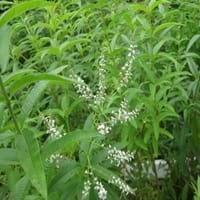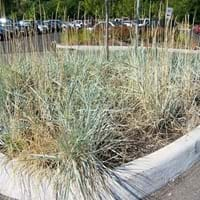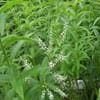Life Span
Perennial
Perennial
Origin
Argentina, Chile
Europe, Northern Europe, Western Europe, Asia, Central Asia, Western Asia
Types
Aloysia arequipensis,Aloysia brasiliensis,Aloysia barbata
Blue Lyme Grass
Number of Varieties
Not Available
Habitat
Roadsides, Scrubs
Clay soil areas, Loamy soils, Sandy areas, sandy seeps, Well Drained
USDA Hardiness Zone
8-11
4-10
AHS Heat Zone
12-8
10 - 1
Sunset Zone
Not Available
A2, A3, 1a, 1b, 2a, 2b, 3a, 3b, 4, 5, 6, 7, 8, 9, 14, 15, 16, 17, 18, 19, 20, 21, 22, 23, 24
Habit
Spreading
Spreading
Minimum Height
Not Available
Minimum Width
Not Available
Flower Color
White
Creamy Yellow
Flower Color Modifier
Not Available
Bicolor
Fruit Color
Brownish Red
Not Available
Leaf Color in Spring
Green
Blue Green, Steel Blue
Leaf Color in Summer
Green
Light Green
Leaf Color in Fall
Green
Light Yellow, Pink, Steel Blue
Leaf Color in Winter
Not Available
Tan
Leaf Shape
Lance shaped
Grass like
Plant Season
Spring, Summer, Fall
Summer, Fall
Sunlight
Full Sun, Partial Sun
Full Sun, Partial Sun
Type of Soil
Clay, Loam
Clay, Loam, Sand
The pH of Soil
Neutral, Alkaline
Acidic, Neutral, Alkaline
Soil Drainage
Well drained
Well drained
Bloom Time
Late Summer
Summer, Late Summer
Tolerances
Not Available
Pollution, Drought, Salt
Where to Plant?
Ground, Pot
Container, Ground, Pot
How to Plant?
Seedlings, Stem Planting
Root Division, Rooted stem cutting, Seedlings
Plant Maintenance
Medium
Medium
Watering Requirements
Requires regular watering
Average Water Needs, occasional watering once established
In Summer
Lots of watering
Lots of watering
In Spring
Moderate
Moderate
In Winter
Average Water
Average Water
Soil pH
Neutral, Alkaline
Acidic, Neutral, Alkaline
Soil Type
Clay, Loam
Clay, Loam, Sand
Soil Drainage Capacity
Well drained
Well drained
Sun Exposure
Full Sun, Partial Sun
Full Sun, Partial Sun
Pruning
Remove damaged leaves, Remove dead branches, Remove dead leaves
No pruning needed in the early stages, Prune grass to maintain level, Remove damaged leaves, Remove dead branches, Remove dead leaves
Fertilizers
All-Purpose Liquid Fertilizer
All-Purpose Liquid Fertilizer, fertilize in spring
Pests and Diseases
Insects, Red blotch
Red blotch
Plant Tolerance
Drought
Drought, Pollution, Salt
Flowers
Insignificant
Insignificant
Flower Petal Number
Single
Single
Foliage Texture
Coarse
Coarse
Foliage Sheen
Glossy
Matte
Attracts
Not Available
Butterflies
Allergy
Skin irritation
Pollen
Aesthetic Uses
Not Available
Ground Cover, Landscape Designing
Beauty Benefits
Not Available
Not Available
Edible Uses
Yes
Insignificant
Environmental Uses
Air purification
Air purification, soil erosion prevension on hill slopes, soil stabilisation
Medicinal Uses
Antispasmodic, Febrifuge
Not Available
Part of Plant Used
Leaves
Stem
Other Uses
Repellent, Used as an insecticide
Used as Ornamental plant
Used As Indoor Plant
No
No
Used As Outdoor Plant
Yes
Yes
Garden Design
Container, Herb, Vegetable, Mixed Border
Mixed Border
Botanical Name
ALOYSIA triphylla
LEYMUS arenarius 'Blue Dune'
Common Name
Lemon Verbena, Lemon beebrush
Blue Dune Lyme Grass, Sand Ryegrass
In Hindi
Lemon Verbena
Blue Dune Lyme Grass
In German
Lemon Verbena
Blau Dune Lyme Grass
In French
Aloysia
Bleu Dune Lyme Herbe
In Spanish
Aloysia triphylla
Azul Duna hierba de Lyme
In Greek
Lemon Verbena
Μπλε Dune Lyme Grass
In Portuguese
Aloysia triphylla
Azul Dune Lyme grama
In Polish
Lemon Verbena
Niebieska Trawa Dune z Lyme
In Latin
Lemon Verbena
Blue Dune Lyme Grass
Phylum
Magnoliophyta
Magnoliophyta
Class
Magnoliopsida
Liliopsida
Family
Verbenaceae
Poaceae
Clade
Angiosperms, Asterids, Eudicots
Angiosperms, Commelinids, Monocots
Tribe
Not Available
Triticeae
Subfamily
Not Available
Pooideae
Number of Species
Not Available
Not Available
Season and Care of Lemon Verbena and Blue Dune Lyme Grass
Season and care of Lemon Verbena and Blue Dune Lyme Grass is important to know. While considering everything about Lemon Verbena and Blue Dune Lyme Grass Care, growing season is an essential factor. Lemon Verbena season is Spring, Summer and Fall and Blue Dune Lyme Grass season is Spring, Summer and Fall. The type of soil for Lemon Verbena is Clay, Loam and for Blue Dune Lyme Grass is Clay, Loam, Sand while the PH of soil for Lemon Verbena is Neutral, Alkaline and for Blue Dune Lyme Grass is Acidic, Neutral, Alkaline.
Lemon Verbena and Blue Dune Lyme Grass Physical Information
Lemon Verbena and Blue Dune Lyme Grass physical information is very important for comparison. Lemon Verbena height is Not Available and width Not Available whereas Blue Dune Lyme Grass height is 150.00 cm and width 75.00 cm. The color specification of Lemon Verbena and Blue Dune Lyme Grass are as follows:
Lemon Verbena flower color: White
Lemon Verbena leaf color: Green
Blue Dune Lyme Grass flower color: Creamy Yellow
- Blue Dune Lyme Grass leaf color: Blue Green and Steel Blue
Care of Lemon Verbena and Blue Dune Lyme Grass
Care of Lemon Verbena and Blue Dune Lyme Grass include pruning, fertilizers, watering etc. Lemon Verbena pruning is done Remove damaged leaves, Remove dead branches and Remove dead leaves and Blue Dune Lyme Grass pruning is done No pruning needed in the early stages, Prune grass to maintain level, Remove damaged leaves, Remove dead branches and Remove dead leaves. In summer Lemon Verbena needs Lots of watering and in winter, it needs Average Water. Whereas, in summer Blue Dune Lyme Grass needs Lots of watering and in winter, it needs Average Water.





